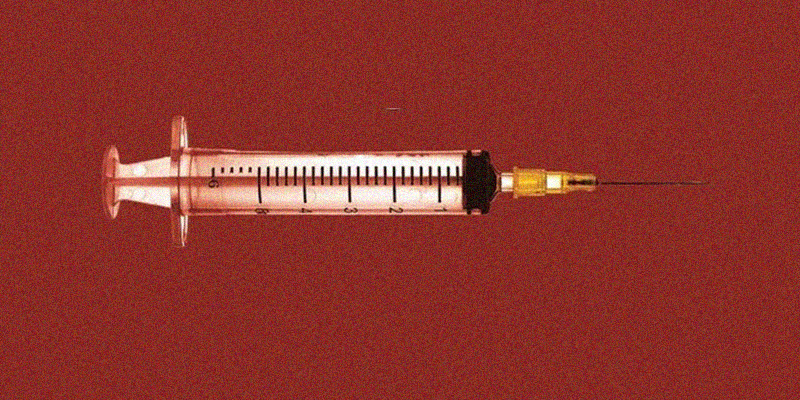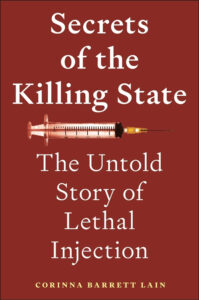Three hours. That’s how long it took the state of Alabama to kill Joe Nathan James by lethal injection in 2022, setting a new record for the longest execution in United States history. James’s autopsy showed puncture wounds and bruising at the knuckles and wrists, indicating that executioners had tried (and failed) to insert an IV in those locations. It revealed puncture wounds in his musculature, nowhere near the anatomical vicinity of a vein. And it documented a deep, jagged incision that pathologists suspect occurred when James flinched as executioners were attempting to perform a “cutdown”—a surgical incision used to expose a vein for IV access when all else has failed.
James’s autopsy told the story of an inept execution and torturous death, but the state of Alabama told a story of success. According to Alabama’s spokesperson, “Nothing out of the ordinary” had happened. And the worst part? He wasn’t wrong.
In Alabama, horribly botched executions by lethal injection are not, in fact, out of the ordinary. Botched executions—executions that go seriously wrong in some obvious way—happen all the time. Two months after the long and laborious death of Joe Nathan James, Alabama punctured Alan Miller eighteen times over the course of ninety minutes in the name of a “humane” death by lethal injection. The state finally stopped the execution, and two months later, it stopped another—the execution of Kenny Smith—when, once again, executioners could not access a vein.
Alabama’s governor took the unprecedented step of temporarily halting executions in the state pending a “top-to-bottom review” of lethal injection. Then the state decided to try something new: death by nitrogen gas. Alabama botched that execution too, subjecting the same Kenny Smith to a twenty-two-minute execution in which he gasped for air, writhed, and convulsed so violently that the gurney itself shook. Nitrogen gas is its own train wreck, but let’s not forget the reason for Alabama’s latest move: the problems with lethal injection.
Other states are struggling too. In 2014, Oklahoma took over forty-five minutes to execute Clayton Lockett, who woke up in the midst of his own execution and tried to get up off the gurney. The next year, it injected Charles Warner with the wrong drug. Those two incidents inpired a six-year break from executions in the state, but Oklahoma broke that fast in 2021 with the execution of John Grant, who went into full-body convulsions and repeatedly vomited on the gurney after being injected with the drugs.
And the list goes on. Arizona conducted three executions by lethal injection in 2022—its first since 2014’s botched execution of Joseph Wood, who gulped and gasped over six hundred times as he died—and Arizona botched all three, leading the newly elected governor to halt further executions in the state pending an independent review of lethal injection. Ohio’s governor also has put executions on hold, explaining in 2019 that lethal injection was putting public health at risk. The state had been buying drugs for lethal injection on the sly through its Department of Public Health and Addiction Services, and when the companies that sold the drugs found out, they threatened to stop sales to Ohio’s state agencies altogether—a move that the governor stated “would put tens of thousands of our citizens at risk.” Tennessee’s governor has temporarily suspended executions too, this time because of revelations that the state had been violating its own execution protocol since 2018.
Lethal injection accounts for nearly 98 percent of all executions in the United States. This is how states execute—and it is also why they don’t. Over the last decade, problems with lethal injection have done more to slow executions than any of the death penalty’s other problems, perhaps more than all of them combined.
The irony is thick. What was supposed to be a kinder, gentler, more humane way to die at the hands of the state is now responsible for more torturous deaths than any other execution method in our nation’s history. And what was supposed to be a way to make executions easier to carry out has now made them infinitely harder.
Why is lethal injection such a hot mess?
This is the question I set out to answer as a death penalty researcher. I couldn’t understand why lethal injection—ostensibly the most humane execution method yet devised—kept leading to torturous deaths. We use drugs to euthanize pets every day, and we know how physician-assisted suicide works. If drugs can be used to humanely end life in these other contexts, why are states so breathtakingly bad at doing it here?
But the short answer is that most everything I thought I knew about lethal injection was wrong. Lethal injection is nothing like what people think.
Botched executions are a part of this story, but they are the tip of the iceberg. They are the suffering that we see. Yet there is also suffering that we don’t see. A 2020 study of over two hundred lethal injection autopsies found that 84 percent showed acute pulmonary edema—lungs filled with froth, evidence that prisoners had drowned in their own fluids. As one court put the point, we are essentially waterboarding people to death. We’re just doing it with drugs under a façade of peaceful slumber.
But the tale told here is even bigger than the executions themselves, for behind the scenes is where it unfolds. Who knew (I didn’t) that states were deciding what drugs to use by Google searches. Or that the lethal injection drug combination that every state used for thirty years was made up off the top of some guy’s head. Or that the people pushing the syringes aren’t doctors. Or that states were getting drugs for lethal injection (at least until the DEA confiscated them) from a drug distributor run out of the back of a London driving school.
States tell us that lethal injection is humane, and when all goes as planned, that is how it looks. The scene is serene and distinctly medical, adding an aura of competence and careful oversight. The white coat enjoys a credibility not associated with the black hood.
But the visual is largely stagecraft—what Pulitzer Prize–winning journalist Garry Wills has called the “dramaturgy of death.” The gurney, the scrubs, the fact that executioners swab prisoners’ arms with alcohol before inserting the needle that will kill them—it’s all just theater. Backstage is a much uglier truth of medicine run amok.
People think lethal injection is a mostly humane execution method that sometimes goes wrong for reasons we can’t quite understand. It is not. Botched executions are not random glitches, but rather the spillover effects of a system that is deeply broken. Lethal injection not working well is how lethal injection works.
Why, then, do states stick with it? Granted, a few states are moving to other execution methods—some old, some new. But most have stuck with lethal injection like glue, despite a track record of torturous deaths and a mountain of difficulties at every turn. What explains their dying devotion?
The answer lies in the fact that lethal injection is special. Every other execution method—hanging, the electric chair, gas chamber, and firing squad—lays bare the brutality of the state that kills in our name. Lethal injection hides it. With lethal injection, we don’t have to deal with the sight of blood, or the smell of burning flesh, or the sounds of suffering—all potent reminders of what the state is actually doing. Instead, we get to tell ourselves that prisoners are just drifting off to forever-sleep, and that has made it easy for us to not think about what the state is doing. Out of sight, out of mind.
The death penalty in America is a highly symbolic issue whose utility lies more in politics than crime control, as criminologist David Garland has powerfully shown. For most Americans, support for the death penalty is support in the abstract. Lethal injection keeps the death penalty abstract. It allows the political uses to flourish while hiding the brutality that executions entail.
These are the secrets of the killing state—all that we know from litigation files, scientific studies, investigative journalism, autopsy reports, research across a number of fields, and statements by the people involved. We are now over forty-five years into the lethal injection era, and most Americans still have no idea what states are doing in their name. It’s time they found out.
_______________________


















